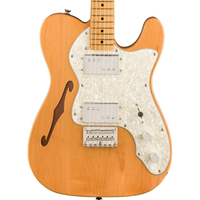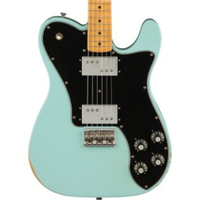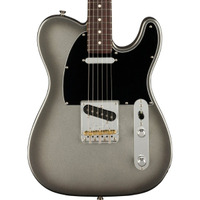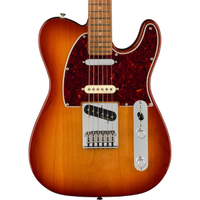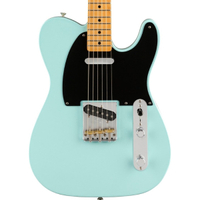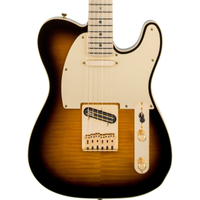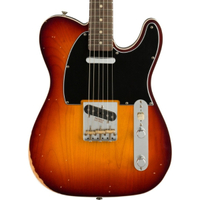Best Telecasters 2025: top Teles for every taste
Whether it’s your first Telecaster or you’ve walked in the boots of guitar-playing royalty, our top Telecasters will help you get your twang on
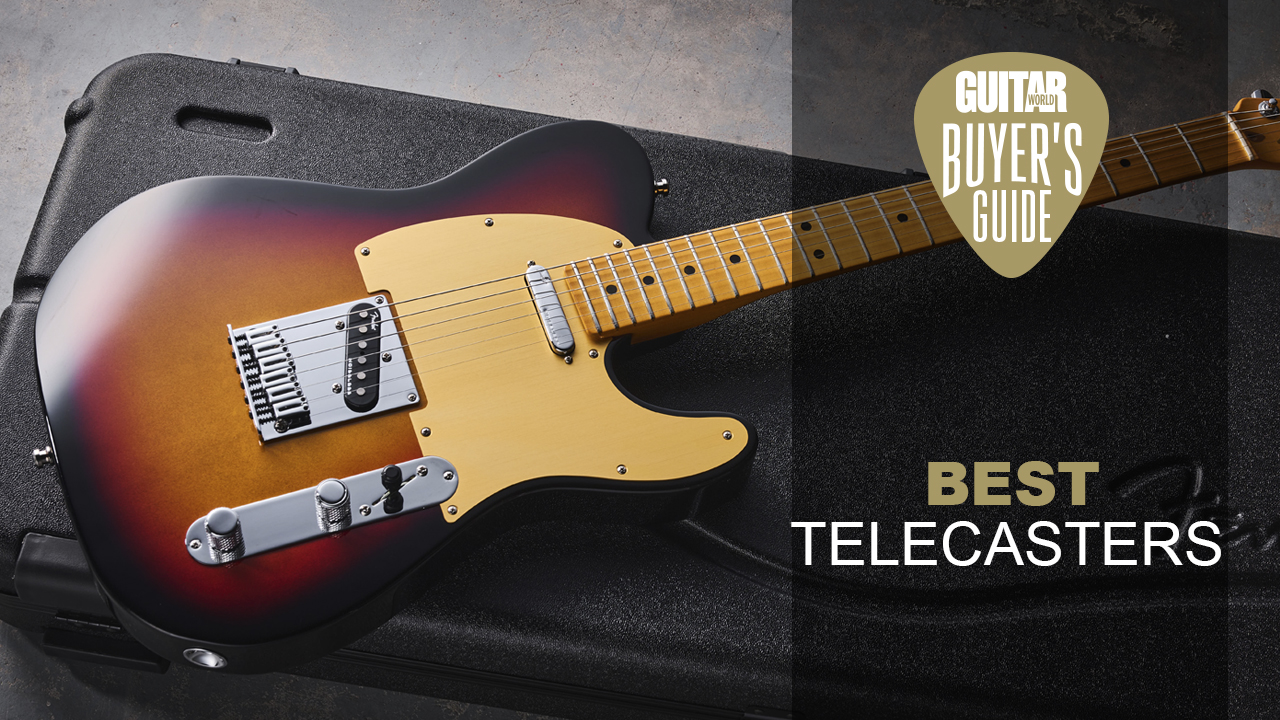
From country twangers to heavy metal shredders, the best Telecasters have found their way into the hands of every type of guitar player imaginable. For me personally, such is its versatility that a Telecaster is all the guitar I’ll ever need. Mine can serve up nice, punchy, bright cleans, crunchy rhythm sounds, mellow, warm jazz tones, and much more. Whether I’m playing punk, grunge, blues, or even metal, my Tele has a tone to match.
Fender’s first mass-produced solid-body electric guitar is a legend that has stood the test of time. The Telecaster has been used on recordings since the early 1950s right up to the modern day, and there’s no sign of that stopping any time soon. With so many versions and iterations of this legendary guitar, it’s perfectly reasonable to want some help finding the right Telecaster for you. There are all sorts of pickup configurations that can allow you to get the sound you’re after, as well as different price points to cover.
So whether you’re just dipping your toes into Teles or adding ‘one more’ to a mammoth collection, we’ve focused on showcasing options that cover a wide range of prices, and specifications. Plus, we’ve included an FAQs section at the end of our guide to help you with any questions you might have along the way.
Our top picks
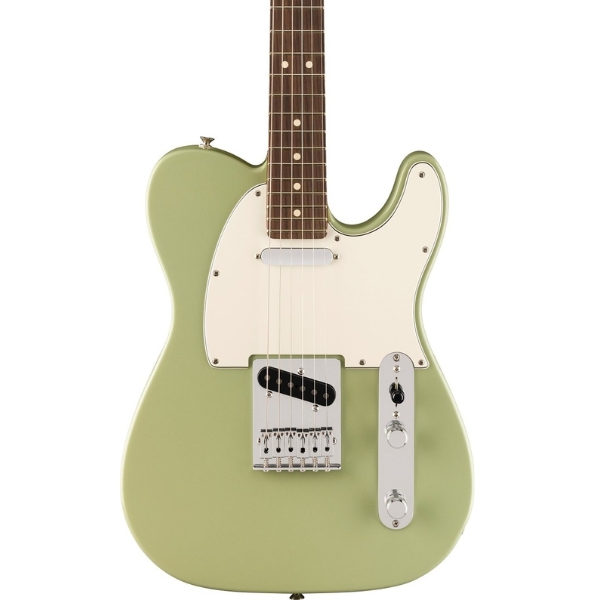
Fender’s Player II Series ups the ante with improved specs and the return of Rosewood. For less than $1,000 you get a lot of bang for your buck here, with pickups wound hotter than traditional spec, a comfortable modern 'C' neck profile, 22-frets, and an excellent range of finishes to choose from.
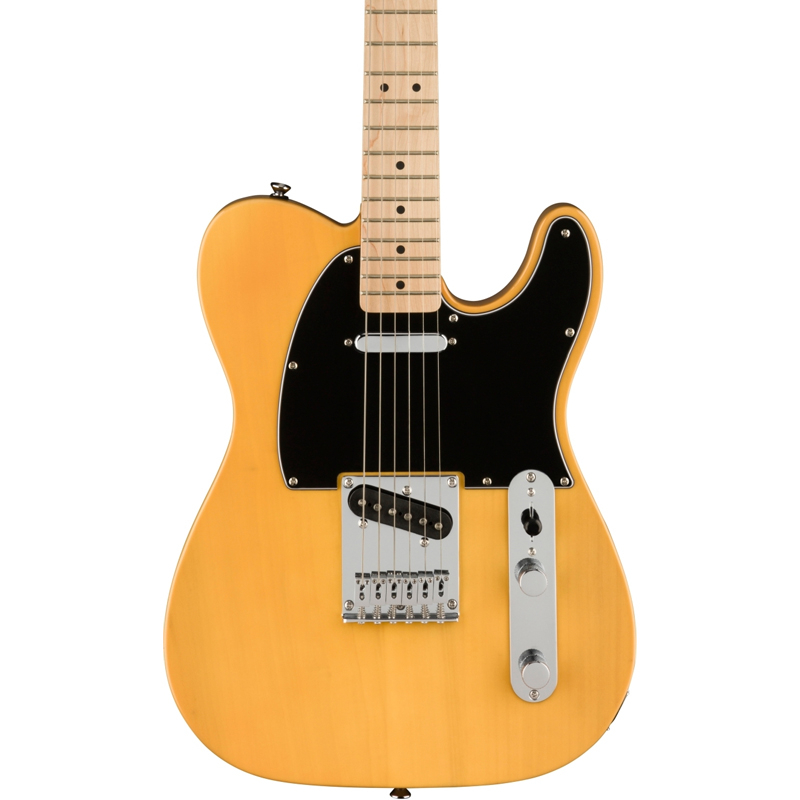
For those starting their journey in guitar, the Squier Affinity Tele offers tremendous value for money and although it can’t match the full Fender experience, costing around a fifth of the cheapest American-made models, this guitar is virtually unbeatable within the sub-$250 end of the market.
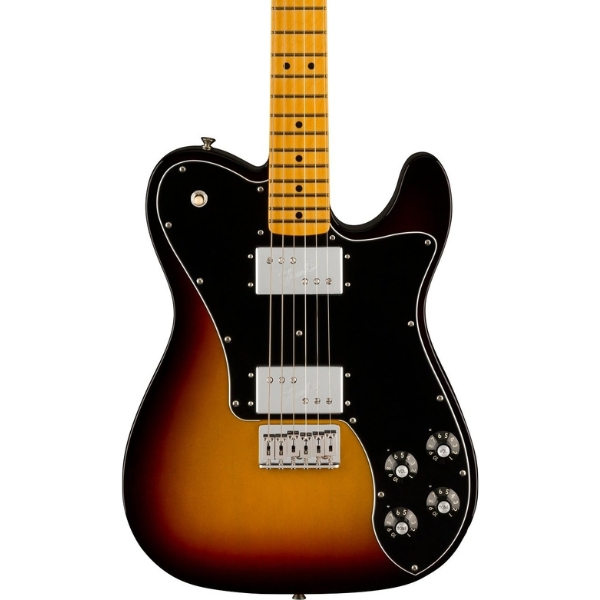
If you're looking for a little extra girth from your Tele tones, then we'd go for the Fender American Vintage II 1975 Telecaster Deluxe. Featuring two CuNiFe wide-range humbuckers, it's got bags of sustain and plenty of power in the engine room. We really love the thin neck profile too.
Best overall
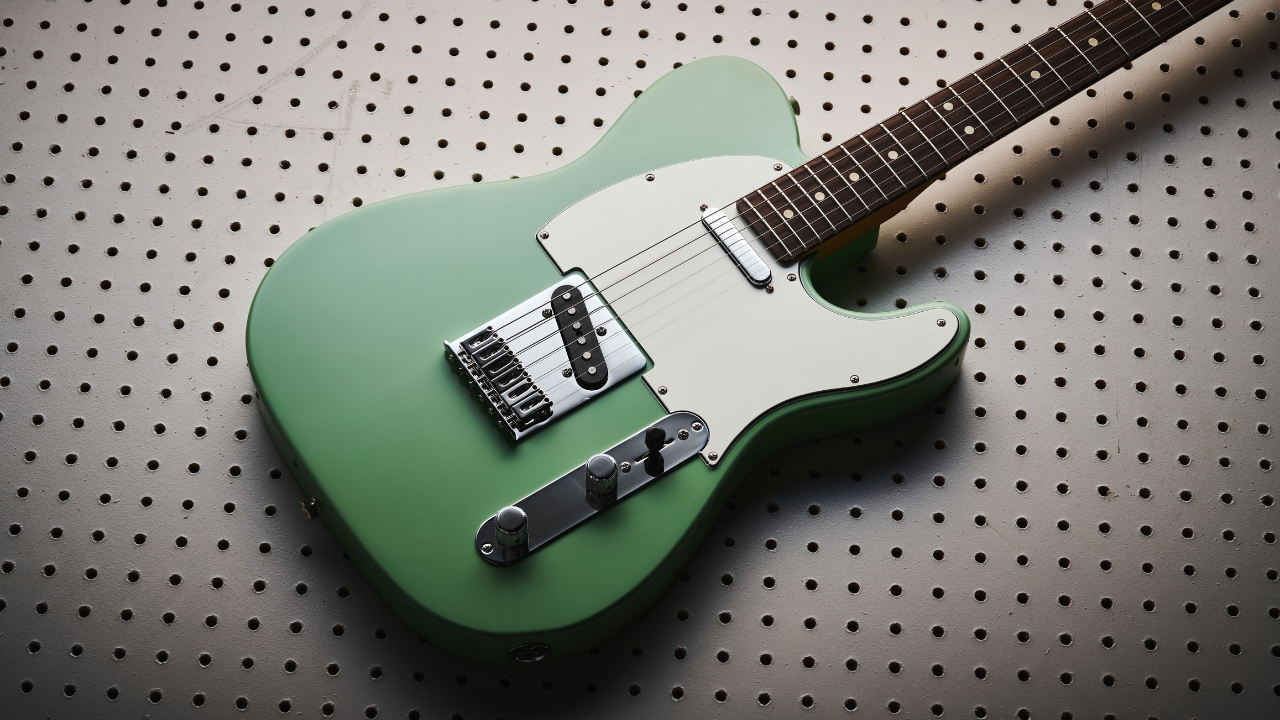
Specifications
Reasons to buy
Reasons to avoid
Fender’s Player Series sums up everything that makes Fender guitars so popular. Now in its second iteration, the Player II series has simplicity and quality at the heart, and the Player II Telecaster doesn’t disappoint.
The gloss-finished alder body and bolt-on maple neck make for a classic combination, delivering plenty of that iconic Tele ‘twang.’ However, this refreshed series now offers more choices, including chambered ash and chambered mahogany bodies, available in an array of stunning new finishes such as Mocha and Aquatone Blue.
The Player II series single-coils reaffirm that instantly recognizable tone, but are wound just that little bit hotter - keeping one foot firmly in the present day. The ‘Modern C’ neck profile is crafted for both performance and comfort, featuring a smooth satin finish that avoids the stickiness often associated with gloss lacquer. With the addition of rosewood fingerboards alongside maple in the Player II series, there’s now a style to suit every preference.
Perhaps controversially so, the Player II Series has 22 frets rather than the traditional 21 - but the Player II Telecaster isn’t built to stick to the rules. It’s here for people who want an all-new experience on a classic, simple, workhorse guitar.

"Switching to the Telecaster, it’s every bit the versatile workhorse you’d expect it to be. It’s juxtaposition of an ultra-bright bridge pickup and dark wooly neck tone delivers all that classic Tele twang and girthy warmth. It’s more aggressive than the Strat, taking to distortion and overdrive a little bit more readily. Flicking to the neck with the overdrive channel of my amp gave me plenty of encouragement to try some Tom Morello-esque riffing, as well as punkier power chords and some discordant hardcore stabs."
Read more: Fender Player II Telecaster review
Best budget
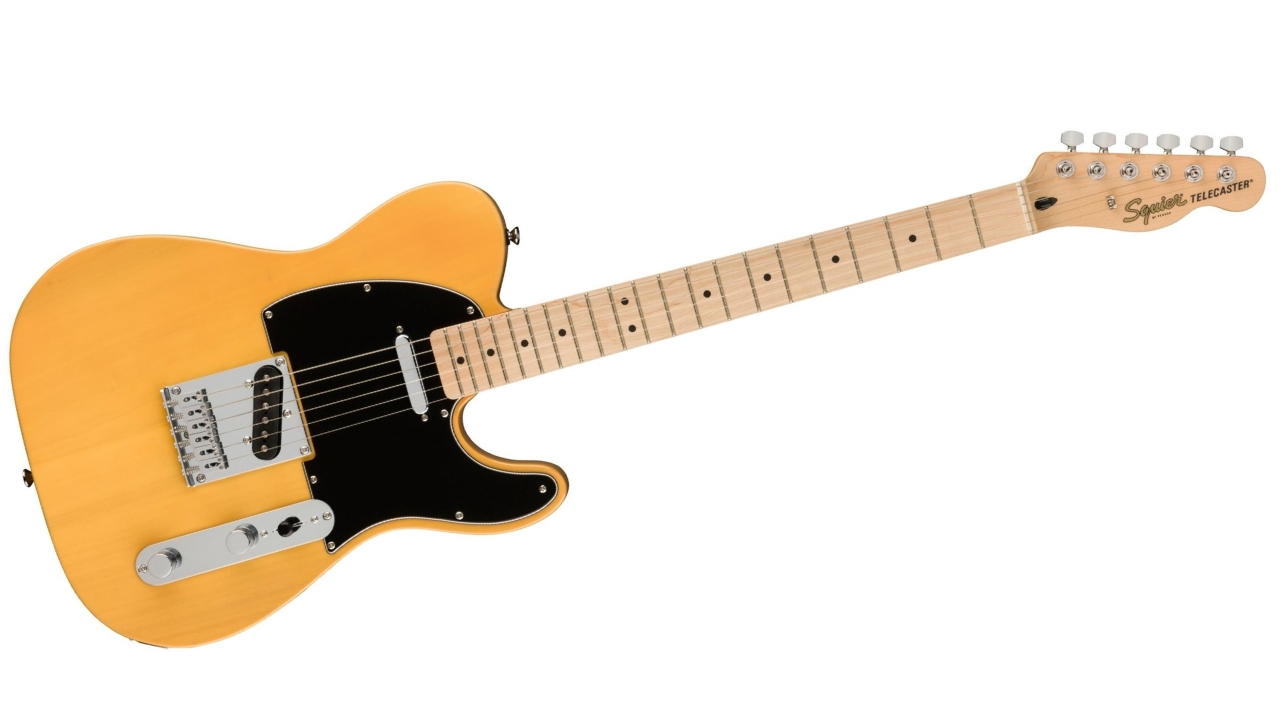
2. Squier Affinity Series Telecaster
Our expert review:
Specifications
Reasons to buy
Reasons to avoid
The Squier Affinity series is Fender’s answer to offering their unique designs and historic tones to the beginner electric guitar market. For those starting their journey in guitar, these instruments offer tremendous value for money and though they can’t offer the full Fender experience, costing around a fifth of the cheapest American-made models, these guitars are virtually unbeatable within the sub-$250 end of the market.
The Telecaster’s longevity can largely be attributed to its no-nonsense, straightforward approach. It’s familiar, comfortable to play, and deceptively versatile—qualities that shine in the Affinity Series Telecaster. The satin 'C'-shaped neck offers exceptional comfort, while features like the chrome tuning machines perform exactly as expected.
Whether you’re a beginner or you’ve just always wanted to add a basic Tele to the collection, with some classic finishes including the Butterscotch Blonde favored by Bruce Springsteen, this could very well be the best Telecaster for you.
Best Telecaster with humbuckers
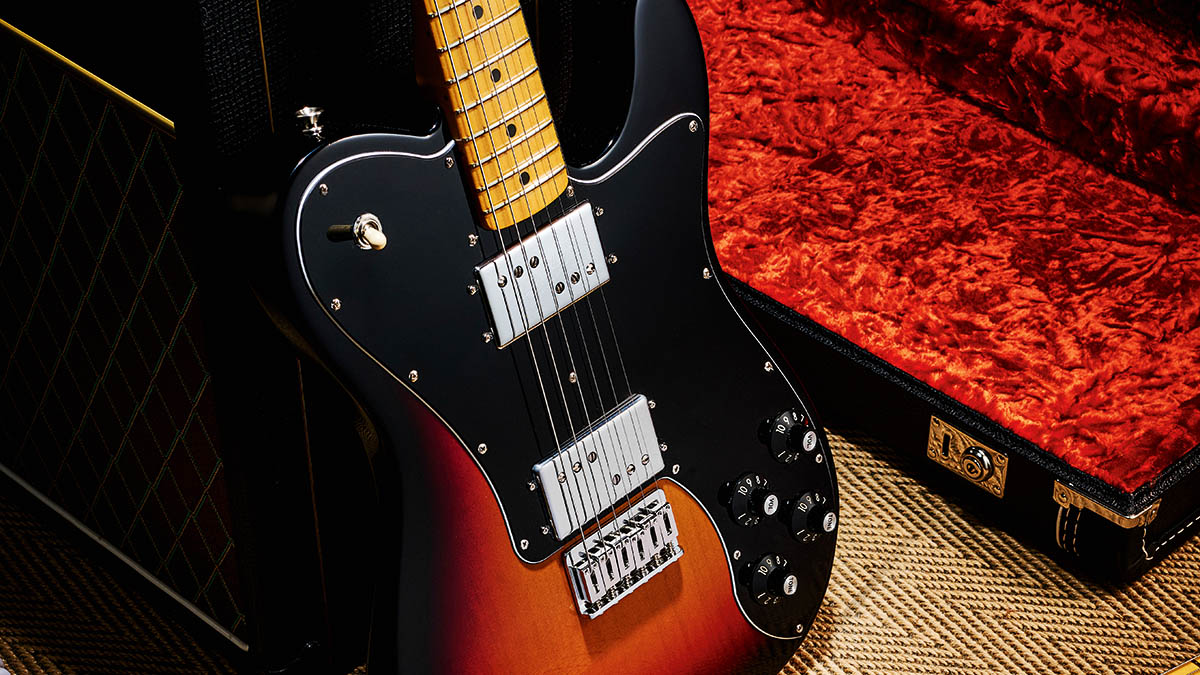
Specifications
Reasons to buy
Reasons to avoid
After an increase in higher-gain players over the course of the 1960s, Fender hired former Gibson pickup guru Seth Love to help update their debut solid-body electric design. The fruits of the collaboration arrived in 1972 as the Telecaster Deluxe, the perfect Telecaster for those who can’t do without humbucker tones. The Fender American Vintage II 1975 Telecaster Deluxe features a pair of those wide-range humbuckers that are perfect for those who want a harder edge on their Tele.
70s specific features include a slimmer than usual ‘C’ neck profile, making this a seriously comfortable instrument. It took me a little by surprise during my testing, but was ultra comfortable thanks to an excellent out-of-the-box setup. A 9.5” radius works really well with the medium jumbo frets, feeling slightly more modern than the more vintage spec Teles in this article. I really enjoyed the fact it has a belly cut too, which makes it a lot more comfortable when you’re playing standing up.
Now although the humbuckers were designed to help Fender compete with Gibson, they don’t quite deliver Les Paul tones. I found the Deluxe to deliver a more gritty, darker texture to that of a regular Tele bridge pickup, with excellent sustain and a really nice, controllable feedback at higher gain levels. Balancing tones between the pickups and their individual tone controls gives you lots of options for experimentation, and they sound great clean too. There’s plenty of nice clean clank here, but if you need it you’ve got more in the tank if you need it.

"The Deluxe model is definitely a more strident beast. Still not particularly Gibson‑like, nonetheless it has a harder, darker edge. Cranking up the Deluxe it becomes something of a monster. It wants to feed back but in a nice, controllable way, and will happily sustain should that be your thing."
Read more: Fender American Vintage II 1975 Telecaster Deluxe review
Best modern Telecaster
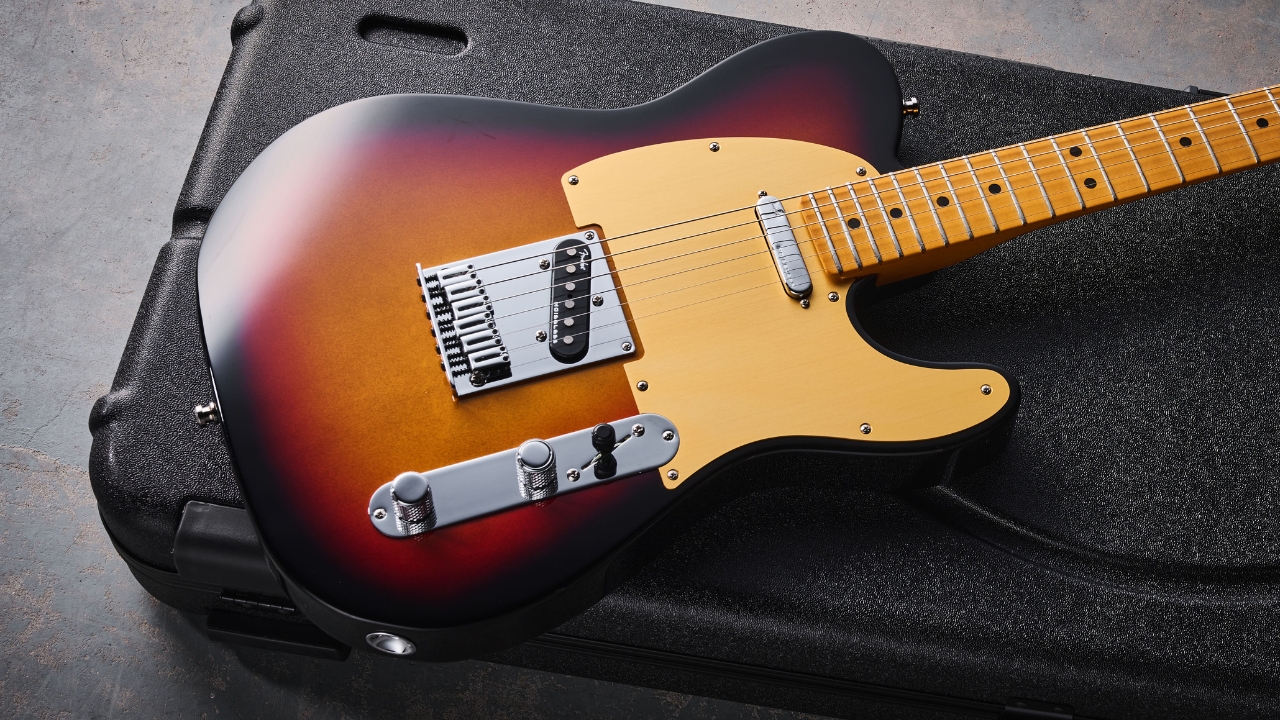
Specifications
Reasons to buy
Reasons to avoid
Initially launched in 2022, Fender's flagship American series, the Ultra, has evolved into the Ultra II. Designed with the modern player in mind, this updated series features compound-radius fretboards, tapered heels, sculpted bodies, revoiced Ultra II noiseless pickups, locking tuners, and a selection of stunning new finishes. Completing the premium aesthetic, the Fender logo is rendered in elegant gold foil on the headstock.
The American Ultra II Tele wears these updates well. It has a compound 10”-14” radius that feels right, especially atop the new Modern D profile neck. It’s a profile that plays quickly but fills the palm in all the right ways, with its satin finish a super-smooth enabler for swift position shifts. The Luminlay side dots are also a nice touch, guiding you to safety amidst dark and dingy venues.
There is a suit of stunning new finishes – Avalanche and Sinister Red are particularly mind-blowing – but some may bemoan the lack of more finish options. For all the modern accouterments, the American Ultra II Tele is still a textbook Tele, with raunchy twang and more than a little snarl when you turn the gain up. The S-1 switch allied to the 3-way pickup position switching makes it sound a little like the greatest hits of Tele tone. That in itself is enough of a recommendation.

"It is hard to find a more playable T-style than this. This American Ultra II series builds upon the good work of the original AmUltra models that launched in 2019. It takes the Telecaster further while playing to its strengths. It’s still a workhorse, still hugely versatile, offering reference tones to unleash in all kinds of musical styles and a speedy, up-to-the-minute ride."
Read more: Fender American Ultra II Telecaster review
Best vintage Telecaster
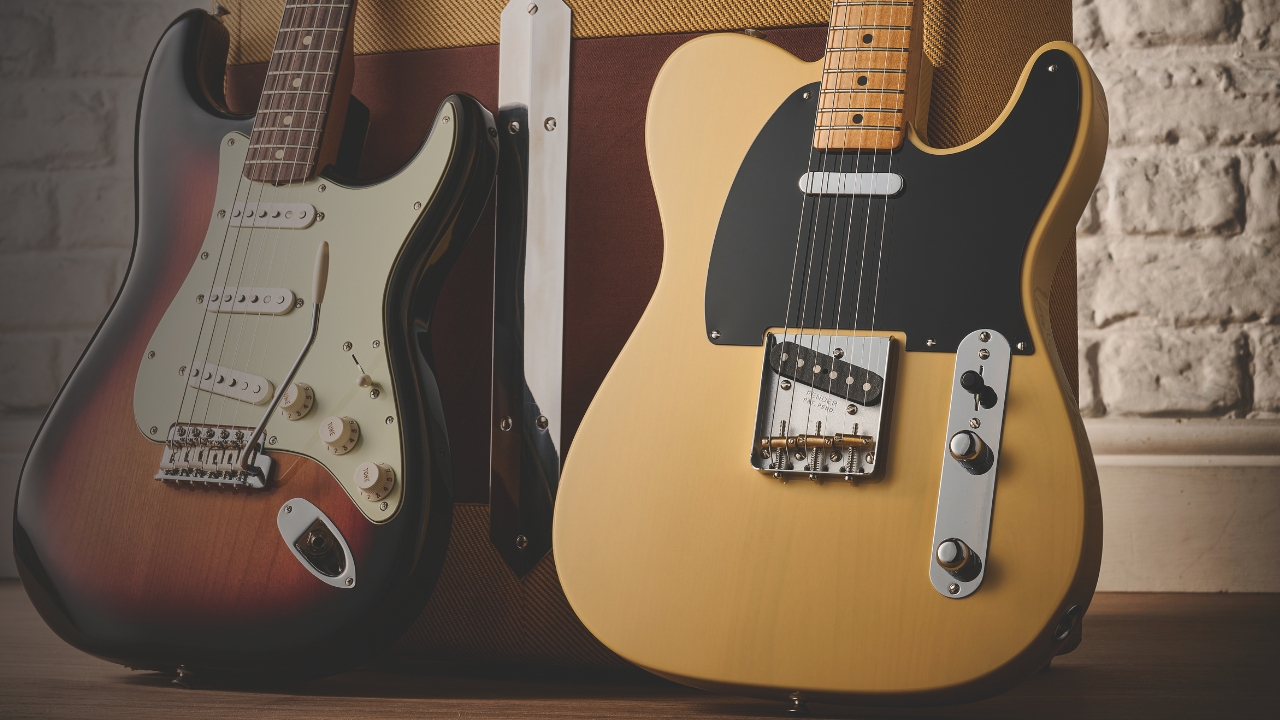
Specifications
Reasons to buy
Reasons to avoid
Designed to replicate the exact year of manufacture, Fender’s Vintera II ‘50s Nocaster is in my mind, the perfect vintage Tele. When the Tele as we know it today initially launched it was called the Broadcaster. Unfortunately, Gretsch also had a drum kit named the Broadkaster, and as you can imagine, disputes ensued. Those models manufactured between the Broadcaster and 1951 when it became known as the Telecaster are often dubbed ‘Nocasters’ as they only bore the Fender logo on their headstock.
History lesson aside, this guitar is vintage Tele through and through. ‘Vintage-tall’ frets that are narrow paired with a 7.25” radius and a chunky ‘U’ profile neck give the Nocaster a decidedly old school neck feel, one that could prove divisive for those used to more modern specs. It’s heaven if you love vintage guitars though, and coupled with a low action we found barre chords came easily, as well as fast blues scale runs. It may seem initially hefty, but you get used to it quick.
In terms of tones, I found the bridge pickup to be beefier than you might expect, which gives you that famous twang when you dig in. It always manages to stay just shy of harsh though, offering a cutting tone that’s adaptable to many styles. The bridge pickup is lovely and warm, and I found it to be really musical. Put both pickups on at the same time and play with the tone knob for a massive array of sounds. It’s a simple guitar, but you can coax so many great sounds out of it.

"The Nocaster is a beefy affair, especially its bridge pickup, which twangs with a hard but pleasing edge when clean, and darkens down superbly when cranked through an amp's drive channel. The brass saddles are sure to be helping here, too. Use the tone control to thicken things up and you’d be forgiven for thinking it’s a Les Paul Deluxe or Firebird."
Read more: Fender Vintera II ‘50s Nocaster review
Best Telecaster for metal
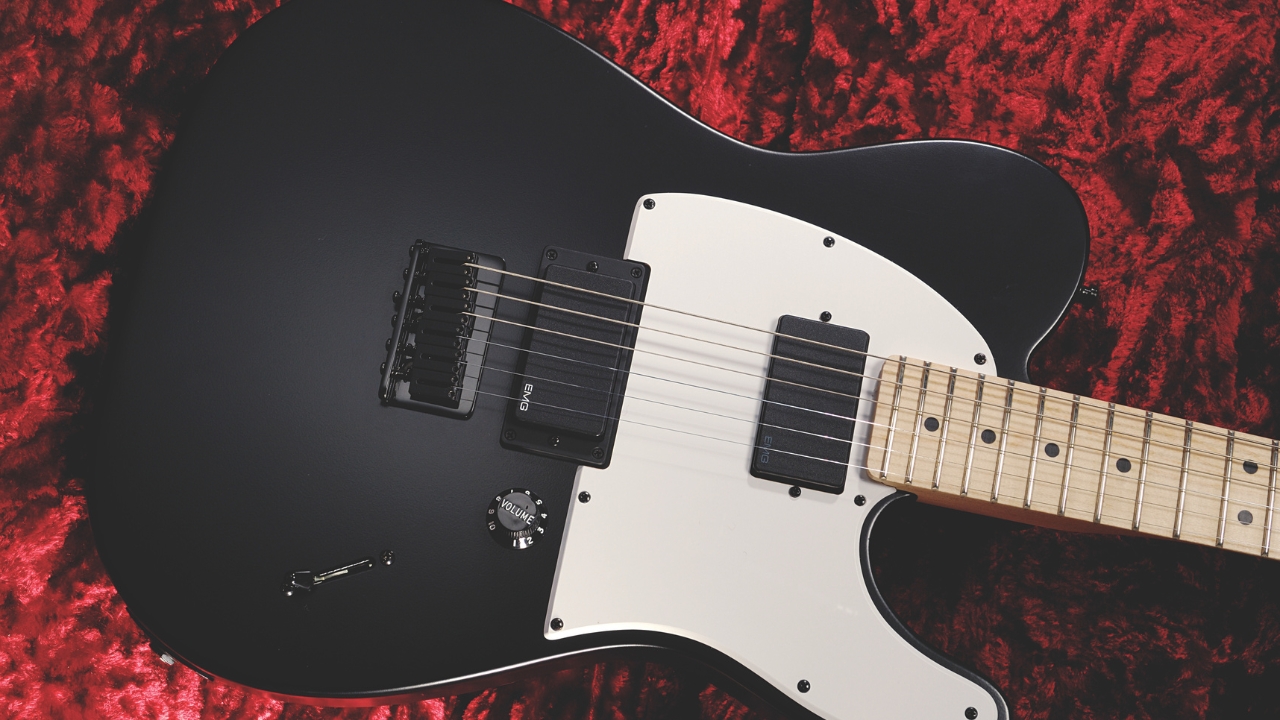
6. Fender Jim Root Telecaster
Our expert review:
Specifications
Reasons to buy
Reasons to avoid
As the guitarist in one of the most successful metal bands the world has seen, Slipknot guitarist Jim Root (aka #4) knows a thing or two about high-gain tones. His signature Telecaster features some less-usual appointments, including an ebony fingerboard, locking tuners, black hardware, no tone control, a Hardtail strings-thru-body bridge, and his favorite active EMG pickup set.
Probably the most un-Tele like Tele on this list, with an active pickup set you can expect high-powered tones with bags of sustain. It sounds big and warm, miles away from the twang typical Telecasters are famous for. If you want to chug, this guitar will absolutely indulge you. The bridge pickup is all power, but the neck is a little lower output, giving you some great options for cleaner tonalities.
The result of this collaboration with Fender is a high-powered workhorse that will be able to cut through the mix and have no problem voicing the kind of lower tunings bands like Slipknot were responsible for popularizing. It’s not a classic Telecaster by any means, but it is one of the best metal guitars available right now.
Also consider
So those are our top picks, but there are many more great options to choose from that offer something a little different in terms of features and performance. We've selected some more of our favorites below.
Squier Classic Vibe '70s Telecaster Thinline
Maple body | Maple neck | Maple fingerboard
The only Thinline in the Fender Squier range certainly offers a lot for its budget price point, from build to playability. Like the Vintera ’70s models, it features two Wide Range humbuckers to help players tap into warmer and more overdriven sounds – which, coupled with the semi-hollow construction – helps avoid some of the more shrill tones classic Telecasters were famous for.
★★★★½
Read more: Squier Classic Vibe '70s Telecaster Thinline review
Fender Vintera 70s Telecaster Deluxe
Alder body | Maple neck | Maple fingerboard
The humbuckers are incredibly musical, both clean and distorted, and offer a bit less of that famous Tele twang in favour of grit and power. All in all, the Fender Vintera '70s Telecaster Deluxe is a brilliantly versatile and more wallet-friendly tribute to one of the more rock-focused models in Fender history.
★★★★½
Read more: Fender Vintera Road Worn 70s Telecaster Deluxe review
Fender American Professional II Telecaster
Alder/pine body | Maple neck | Rosewood/maple fingerboard
The American Professional II series brings the Fender Telecaster into the modern age while staying faithful to the original design. But a few tiny adjustments can make a world of difference – from the Treble Bleed circuit that retains the high-end when your guitar volume is turned down to its redesigned ‘ashtray’ bridge that’s angled better for the picking hand.
★★★★½
Read more: Fender American Professional II Telecaster review
Fender Player Plus Nashville Telecaster
Alder body | Maple neck | Maple/Pau Ferro fingerboard
The Nashville Tele delivers precise, clean and crisp tones thanks to its set of three noiseless Player Plus pickups, combining the versatility of a Strat with that famous Tele ‘twang’ to create a guitar capable of a lot more than you think. The middle pickup on the Nashville is actually taken from a Stratocaster, in order to provide a warmer mid-range that turns the Tele from an aggressive, spiky axe into a smooth operator with increased capabilities.
★★★★½
Fender Vintera '50s Telecaster Modified
Alder/Ash body | Maple neck | Maple fingerboard
In the case of the Fender Vintera '50s Modified Telecaster, you’re getting a Vintage-Style Single-Coil in the neck and a high output Alnico 5 Twisted Single-Coil in the bridge – which, along with the four-way selector and S1 switch, will be able to cover some serious tonal ground.
★★★★½
Fender Richie Kotzen Telecaster
Ash body w/ Flame Maple top | Maple neck | Maple fingerboard
The fact that American guitar virtuoso Richie Kotzen has stuck with his signature Telecaster for the large majority of his career speaks volumes. It’s an instrument that can take him from classic Fender tones for RnB/funky lines through to incredibly musical high-powered gains with effortless ease. All that is thanks to a single-coil Alnico 5 DiMarzio Twang King in the neck and a ceramic stacked humbucker, The Chopper T, in the bridge.
★★★★½
Fender Jason Isbell Custom Telecaster
Alder body | Maple neck | Rosewood fingerboard
Let's not beat around the bush. The Jason Isbell signature Telecaster is gorgeous. The relic'd Chocolate sunburst finish provides a subtle twist on the iconic ‘burst that Fender is so well known for - and isn’t the only subtle twist this guitar has in store. The special Jason Isbell pickups were designed in collaboration with the almighty Tim Shaw - and aren’t found in any other Telecaster on the market - delivering the typical bright, punchy ‘sparkle’ that Isbell is known for.
★★★★☆
FAQs
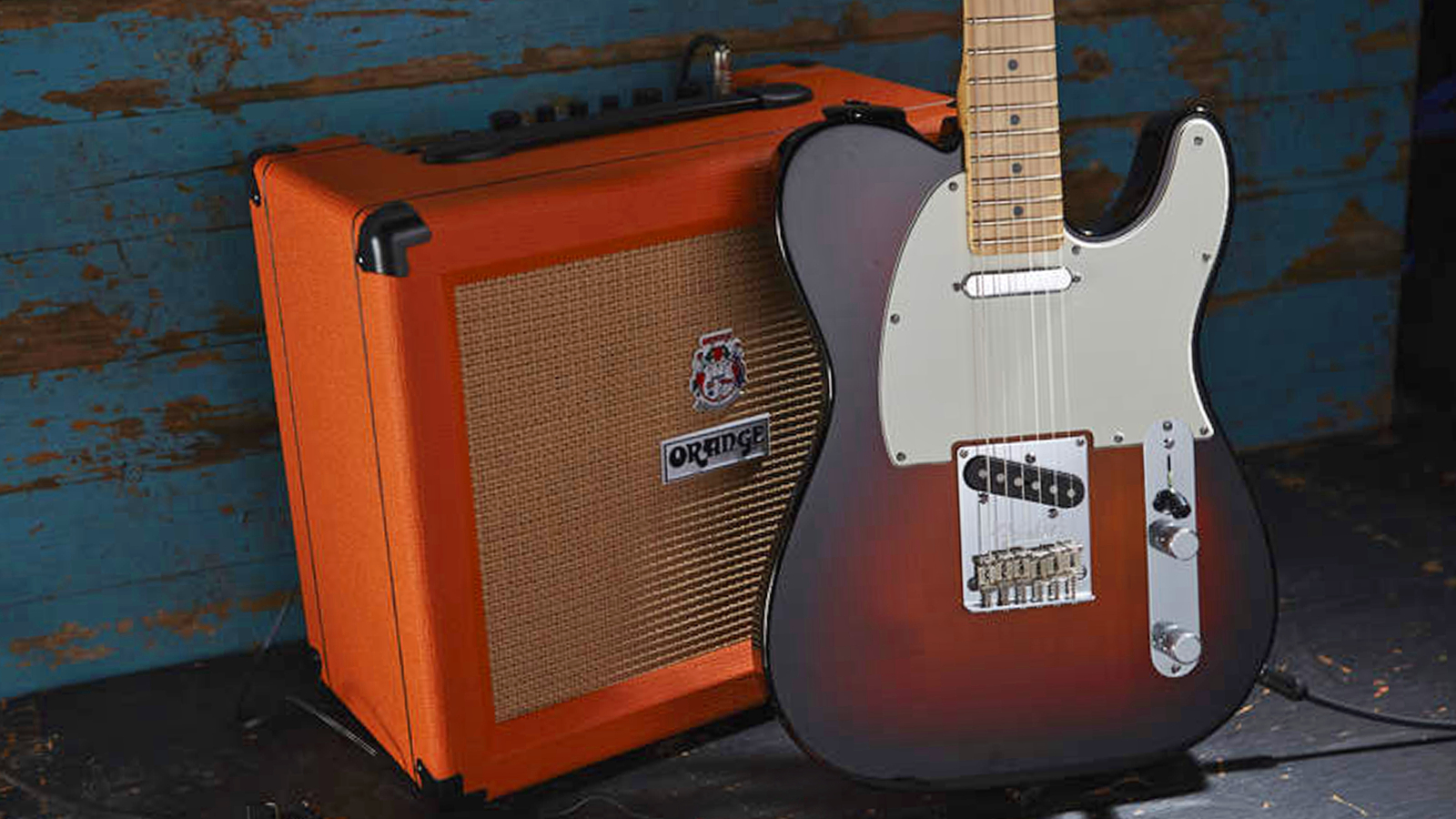
What pickups are right for me?
Traditionally, a Tele has two single coil pickups (in its early Esquire days, it only had one in the bridge position), however, our pick of the best Telecasters showcases a number of different configurations that can yield totally different sounds.
If you’re after the classic Tele tone – that is, bright and twangy, with the option of mellow and smooth, with that sort of percussive middle position sound, then you’ll want the tried and tested SS (two single coils) set-up. If you want more output and a thicker sound, then humbuckers might be your friend here, instead of single coils. The Jim Root Tele even features active pickups that give you a super hot output and are perfect for metal tones.
Do I need solid body or semi-hollow?
The Telecaster started out life as a solid body guitar, but in the late 1960s, Fender added the option of the Thinline Tele. These are semi-hollow so are physically lighter and more acoustically resonant. They tend to sound warmer, and a little more rounded, but still with plenty of clarity. The solid body Tele will give you a more ‘in your face’, bright and cutting tone.
Where are Telecasters made?
Telecasters are made in different locations. Squiers are made in the far east, by a talented workforce. The materials used don’t tend to be as good as they are on Fenders, but they are more affordable.
Fender’s entry-level models are made in Mexico but rest assured, they’re far from your classic ‘entry-level’ instruments. They’re quality guitars and are up to the rigors of touring and recording.
You’ve then got Japanese and US-made Fenders which step up the quality even more. Models made in America tend to be the most expensive – you’ll see these being played by pros around the world.
How we test
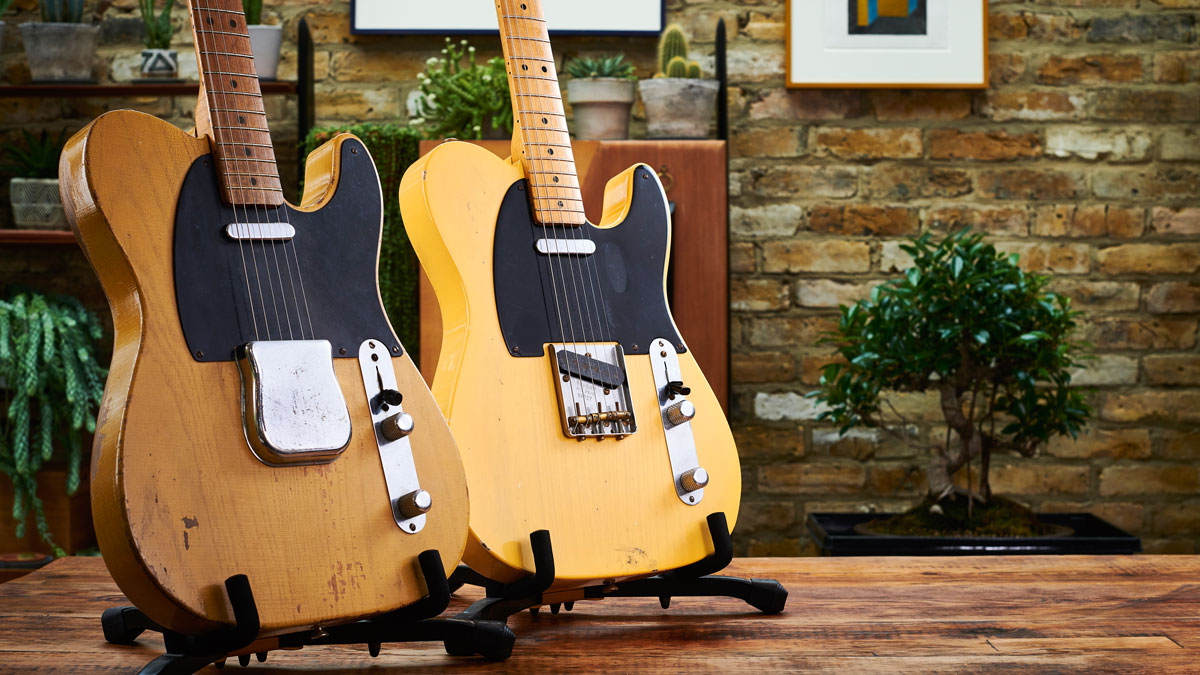
Here at Guitar World, we are experts in our field, with many years of playing and product testing between us. We live and breathe everything guitar-related, and we draw on this knowledge and experience of using products in live, recording and rehearsal scenarios when selecting the products for our guides.
When choosing what we believe to be the best Telecasters available right now, we combine our hands-on experience, user reviews and testimonies and engage in lengthy discussions with our editorial colleagues to reach a consensus about the top products in any given category.
First and foremost, we are guitarists, and we want other players to find the right product for them. So we take into careful consideration everything from budget to feature set, ease of use and durability to come up with a list of what we can safely say are the best Telecasters on the market right now.
Read more about our rating system, how we choose the gear we feature, and exactly how we test each product.
Related buyer's guides
You can trust Guitar World
- Fender vs Squier: What's the difference?
- Check out our guide to the best Gibson Les Pauls for every budget
- From surf icons to alt-rock heroes, here are the best offset guitars
- Blow the budget with the best high-end electric guitars
- Best guitar tuners: chromatic, polyphonic and strobe
- The best electric guitar strings for your axe
Get The Pick Newsletter
All the latest guitar news, interviews, lessons, reviews, deals and more, direct to your inbox!
Amit has been writing for titles like Total Guitar, MusicRadar and Guitar World for over a decade and counts Richie Kotzen, Guthrie Govan and Jeff Beck among his primary influences as a guitar player. He's worked for magazines like Kerrang!, Metal Hammer, Classic Rock, Prog, Record Collector, Planet Rock, Rhythm and Bass Player, as well as newspapers like Metro and The Independent, interviewing everyone from Ozzy Osbourne and Lemmy to Slash and Jimmy Page, and once even traded solos with a member of Slayer on a track released internationally. As a session guitarist, he's played alongside members of Judas Priest and Uriah Heep in London ensemble Metalworks, as well as handled lead guitars for legends like Glen Matlock (Sex Pistols, The Faces) and Stu Hamm (Steve Vai, Joe Satriani, G3).
- Matt McCrackenJunior Deals Writer
- Ross Holder
- Richard Blenkinsop
“It holds its own purely as a playable guitar. It’s really cool for the traveling musician – you can bring it on a flight and it fits beneath the seat”: Why Steve Stevens put his name to a foldable guitar
“Finely tuned instruments with effortless playability and one of the best vibratos there is”: PRS Standard 24 Satin and S2 Standard 24 Satin review
